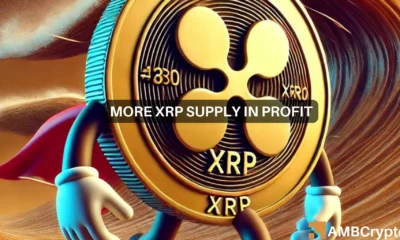Will scalability issues let Ethereum touch ‘50% of the world’s financial transactions’

One of the most visible victims of the recent bloodbath has been Ethereum‘s native token. Ether has lost 17.3% of its valuation in just the past week. Regardless of this, institutional proponents have continued to place their faith in the blockchain network even as “ETH-killers” threaten to dethrone it from the top spot.
The chief investment officer of cryptocurrency-centered hedge fund Pantera Capital, Joey Krug, is one such believer. He recently suggested that Ethereum could one day become a fundamental part of the global financial system. Speaking to Bloomberg, he said,
“If you roll the clock forward 10 to 20 years, a very sizable percent, maybe even north of 50% of the world’s financial transactions in some way, shape or form will touch Ethereum.”
This will be despite the stiff competition that it is currently facing, which Krug believes will eventually turn to Ethereum as a base layer to build upon. Several smart contract platforms have emerged in the years since Ethereum’s inception. Thus, posing as threats to its dominance with the rise of DeFi and NFT trading. These include the likes of Solana, Avalanche, and Polkadot, which all claim to offer higher transaction speed and lower cost amidst Ethereum’s rising congestion issues.
Without singling out any network, the CIO highlighted concerns regarding security threats and increased centralization on ETH’s rival platforms, arguing,
“There’s too many trade-offs other chains are making that Ethereum is not making on the decentralization side that are pretty important. I don’t know if they’re best suited to be the new global financial settlement layer.”
A roadblock to reaching this milestone would be the high transaction fee typical of the network. Earlier this week, the total gas fee charged to make transactions reached a one-month high of $1,882,360.
? #Ethereum $ETH Total Fees Paid (7d MA) just reached a 1-month high of $1,882,360.40
Previous 1-month high of $1,881,803.77 was observed on 08 January 2022
View metric:https://t.co/ck7taVmbWM pic.twitter.com/BEEUbxYCOW
— glassnode alerts (@glassnodealerts) January 9, 2022
Consequently, the number of non-zero addresses reached an all-time high on 10 January. Thereby, suggesting that users have been unable to move their assets even during a market slump due to high network fees.
? #Ethereum $ETH Number of Non-Zero Addresses just reached an ATH of 72,411,467
View metric:https://t.co/beS1MtIgAZ pic.twitter.com/7u64eBpayo
— glassnode alerts (@glassnodealerts) January 9, 2022
Ethereum’s scalability issues have already started to dampen its adoption as an institutional settlement layer. Notably, Su Zhu, the CEO of Singapore-based hedge fund Three Arrows Capital recently announced ‘abandoning’ the network due to its high gas fees.
However, Krug predicted that these obstacles will be removed once Ethereum successfully transitions to ETH 2.0 and ushers in the Proof-of-Stake era, further propagating its use as a base layer. With the public testnet already released, the merge to POS is expected to take place in the first quarter of 2022.
Its co-founder Vitalik Buterin recently noted that the developments after this will focus on increasing the network’s scalability and throughput. He has also proposed a multidimensional pricing model for its burning mechanism.
However, analysts at the global banking supremo JP Morgan remain unconvinced, as they believe important developments might arrive too late for the network to continue holding its dominance. A recent research note highlighted that delays in incorporating the final phase of sharding, which will be significant in scaling the network, have pushed the development to at least next year. Thus, giving its competitors a window to capture chunks of the DeFi market share.






